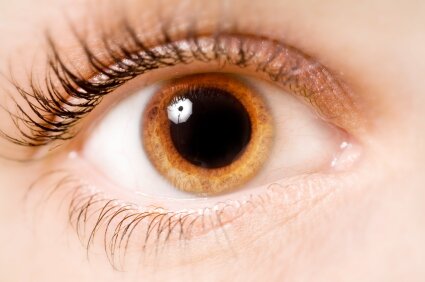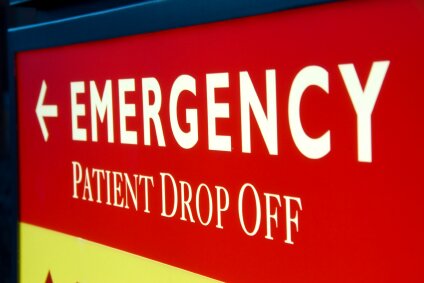Managing A Stroke as a CNA
Ok so I wanted to go over a very common ailment that we see in elder care facilities and as home health aides. One of the more common emergencies I saw CNA’s deal with were Strokes. Stroke patients really can be scary. A lot of times the emergency can be confusing and frustrating. So I think it would be best if we talked a bit about what exactly a stroke is, and how we can help our patients during this emergency.
A Stroke is caused by a part of the patients brain being deprived of oxygen. This can happen in a few different ways.
Types of Strokes
Ischemic Strokes
One way is called an Ischemic Stroke. The Ischemic stroke essentially is a blockage in the arteries leading to the brain. This kind of stroke is very similiar to what occurs in a patient that is having a heart attack, however in this case it doesnt cause ischemia to the heart but to the brain. A blood clot, or embolus, can dislodge, and move through the blood, this blood clot can effect many different areas, however if it blocks the cerebral arteries it can cause a stroke.
Hemorrhagic Strokes
The second Kind of stroke that can occur is called a hemorrhagic stroke. These strokes are causes from burst blood vessels within the brain. What essentially happens is an artery bursts within the patients brain, this can also be called an aneurysm. The blood flows out of the vasculature and into space between the brain and the skull. The brain is kept at a certain pressure, called the ICP or inter cranial pressure. This pressure is increased drastically as more blood flows into this space. The brain is slowly pushed to one side as the pressure increases. The pushing of the brain to one side can cause damage, and lack of blood flow and oxygenation to the brains tissues.
Transient Ischemic Strokes
The Third type of stroke that can be seen is called a TIA or Transient Ischemic Attack. This is similiar to an ischemic stroke, however in the case of a TIA, the embolus or blood clot blocks the artery for a time, and then passes through. So the patient presents as possibly having a stroke, but then the signs go away and the patient returns to normal. This type of stroke often will reoccur as an ischemic stroke in approximately 70% of patients. So it is important that patients who presented as having a stroke are still taken to a hospital.
Recognizing a Stroke
 There are a few different things that we as CNA’s should look for when checking to see if our patient may have had a stroke. Signs and symptoms of a stroke can vary, and if you ever have any concerns about whether a patient has had a stoke it is best to call 911.
There are a few different things that we as CNA’s should look for when checking to see if our patient may have had a stroke. Signs and symptoms of a stroke can vary, and if you ever have any concerns about whether a patient has had a stoke it is best to call 911.
Altered mental Status: If a patient is altered there is a chance he or she may of had a stroke. There are many reasons a patient could become altered, and it is definitely not always a stroke. But if a patient becomes altered it is important that you consider that it might very well be a stroke. Talk to the patient, ask them if they know where they are, their names, the day of the week. You probably know the patient better then most people, so if they seem different from what you are used to, then it is time to get them help.
Unilateral Weakness: This is a fancy term for one sided weakness. Often times strokes will cause a weakness in one side of the body. Often we can see facial droop on one side of the face, or we will see inability of the patient to use one side of his or her body. A great way to assess for this is to have the patient give you a great big smile, asking them to show you their teeth. This will often show the patients facial droop, if there is any.
Assessing for unilateral weakness can be done by asking the patient to squeeze your fingers on both hands at the same time. You can easily tell if one side is stronger then the other by doing this. One other great method is to hold the patients hands up, palms up in front of them. Often this will show a weak side, the patients arm will drift down back to his or her side if the arm lacks the strength to keep itself up, this may indicate a stroke.
Dilated Pupil: If you see unequal pupil size on your patient it may be indicative of a stroke. Often times in hemorrhagic strokes the increased intercranial pressure can cause one sided pupil dilation.
Aphasia: Often times people that have had strokes may not be able to speak properly. They are either unable to speak the words, or the words they speak will not make any sense.
Incontinence: Often times patients who have had a stroke will be incontinent, this can be a helpful clue in determining if you patient has had a stroke.
Vital Signs: Often times patients that have had strokes will have high blood pressures. This is not always the case, however in most stroke cases that I have seen the patients blood pressure will be at a systolic BP of 170+. A lot of times we will see an increased pulse rate, this can be due to the heart responding to the decreased oxygenation of the brain or it can be simply due to the fear and anxiety that is involved with having a stroke. It can be common to see a change in the patients respiratory rate, this can be due to the same reasons the heart rate increased, increased need for oxygen and fear and anxiety.
Treatment Plan
Ok so we think our patient has had a stroke…. what should we do.

![]() Call 911!! There isnt a great deal that we can do to help a patient with a stroke, the best thing we can do is get them to a hospital quickly. There are very effective treatments for patients who have had strokes, but they need to be done fast.
Call 911!! There isnt a great deal that we can do to help a patient with a stroke, the best thing we can do is get them to a hospital quickly. There are very effective treatments for patients who have had strokes, but they need to be done fast.
Ischemic strokes can be helped with antithrombolytics. This medication can break up the clot that is causing the damage and allow for oxygenation of the damaged area. This must be done within 2 hours of the patients stroke onset, so time is of the essence!!
Hemmorghic Strokes can also be treated, the doctors will try to control the bleeding and control the inter cranial pressure of the patient, time is also of the essence for these patients.
![]() Assist the patient with his or her oxygen if this is already prescribed, putting the patient on a nasal canula and giving them 100% oxygen can be very helpful for this patients current condition. Always remember to follow your protocols as a CNA and of your facility. Remember this patients emergency is all about lack of oxygen to certain tissues, so increasing oxygen supply in the blood can help. Once again, do not give unprescribed Oxygen to a patient unless you have consent from a doctor or your RN.
Assist the patient with his or her oxygen if this is already prescribed, putting the patient on a nasal canula and giving them 100% oxygen can be very helpful for this patients current condition. Always remember to follow your protocols as a CNA and of your facility. Remember this patients emergency is all about lack of oxygen to certain tissues, so increasing oxygen supply in the blood can help. Once again, do not give unprescribed Oxygen to a patient unless you have consent from a doctor or your RN.
![]() Protect your patients airway, Often times patients who have had strokes are going to be drooling, sometimes they have difficulties swallowing. You can make sure that the patients airway is not compromised by removing excessive saliva by either utilizing suctioning, or helping clear the excess saliva with a clean and sterile cloth or dressing.
Protect your patients airway, Often times patients who have had strokes are going to be drooling, sometimes they have difficulties swallowing. You can make sure that the patients airway is not compromised by removing excessive saliva by either utilizing suctioning, or helping clear the excess saliva with a clean and sterile cloth or dressing.
![]() If possible grab a quick set of vital signs to hand off to the paramedics that arrive to treat the patient.
If possible grab a quick set of vital signs to hand off to the paramedics that arrive to treat the patient.
![]() IMPORTANT Write down the exact time that the patient’s emergency began. Give this your best shot, but it’s extremely important information for the coming paramedic and the ER doctor that will be treating this patient. Possibly the most important information you can give to the medical professionals.
IMPORTANT Write down the exact time that the patient’s emergency began. Give this your best shot, but it’s extremely important information for the coming paramedic and the ER doctor that will be treating this patient. Possibly the most important information you can give to the medical professionals.
Test Your Stroke Care Knowledge
Stroke Quiz
Congratulations - you have completed Stroke Quiz.
You scored %%SCORE%% out of %%TOTAL%%.
Your performance has been rated as %%RATING%%
2086 total views, 2 today
